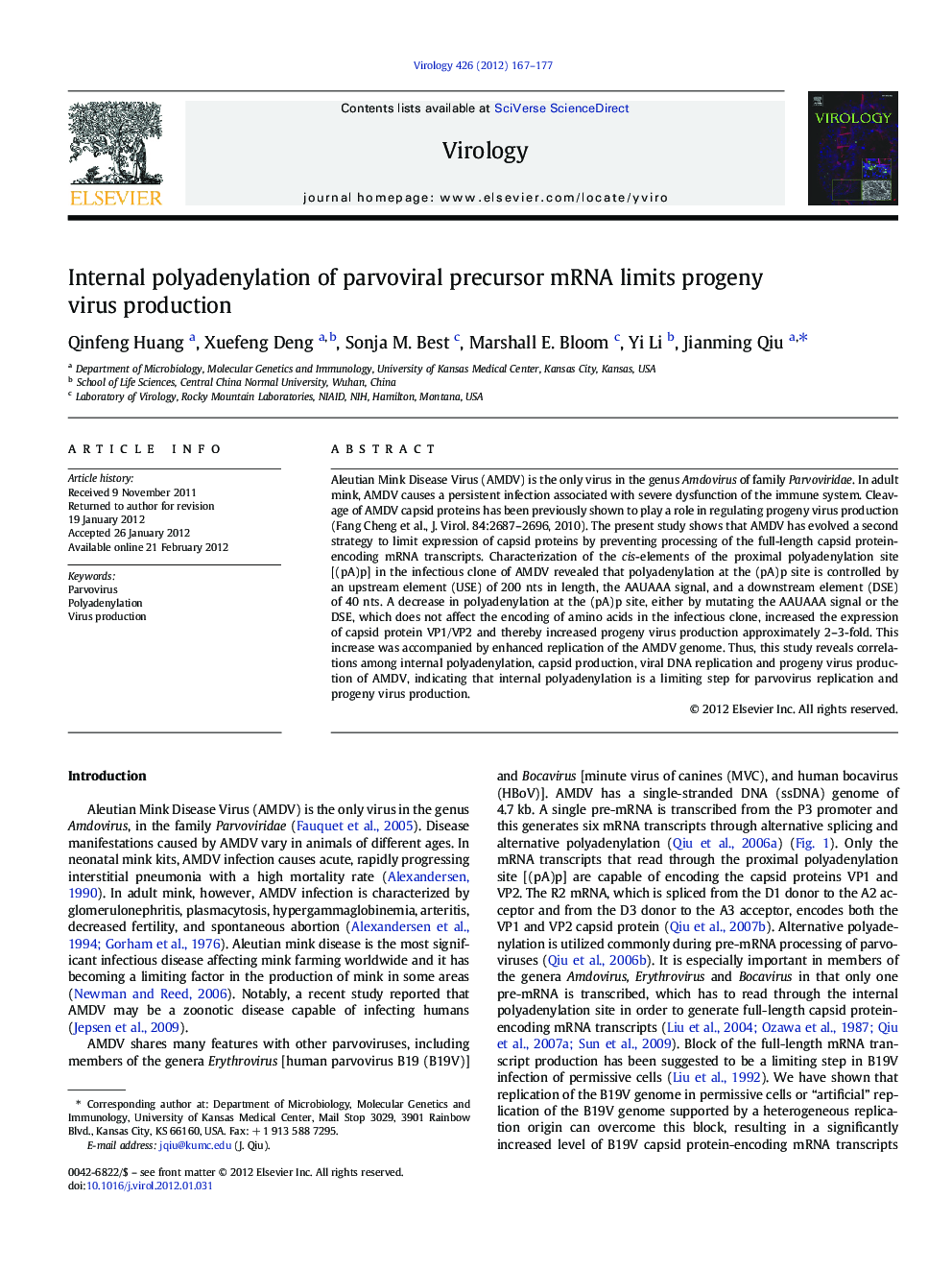| Article ID | Journal | Published Year | Pages | File Type |
|---|---|---|---|---|
| 3424564 | Virology | 2012 | 11 Pages |
Aleutian Mink Disease Virus (AMDV) is the only virus in the genus Amdovirus of family Parvoviridae. In adult mink, AMDV causes a persistent infection associated with severe dysfunction of the immune system. Cleavage of AMDV capsid proteins has been previously shown to play a role in regulating progeny virus production (Fang Cheng et al., J. Virol. 84:2687–2696, 2010). The present study shows that AMDV has evolved a second strategy to limit expression of capsid proteins by preventing processing of the full-length capsid protein-encoding mRNA transcripts. Characterization of the cis-elements of the proximal polyadenylation site [(pA)p] in the infectious clone of AMDV revealed that polyadenylation at the (pA)p site is controlled by an upstream element (USE) of 200 nts in length, the AAUAAA signal, and a downstream element (DSE) of 40 nts. A decrease in polyadenylation at the (pA)p site, either by mutating the AAUAAA signal or the DSE, which does not affect the encoding of amino acids in the infectious clone, increased the expression of capsid protein VP1/VP2 and thereby increased progeny virus production approximately 2–3-fold. This increase was accompanied by enhanced replication of the AMDV genome. Thus, this study reveals correlations among internal polyadenylation, capsid production, viral DNA replication and progeny virus production of AMDV, indicating that internal polyadenylation is a limiting step for parvovirus replication and progeny virus production.
